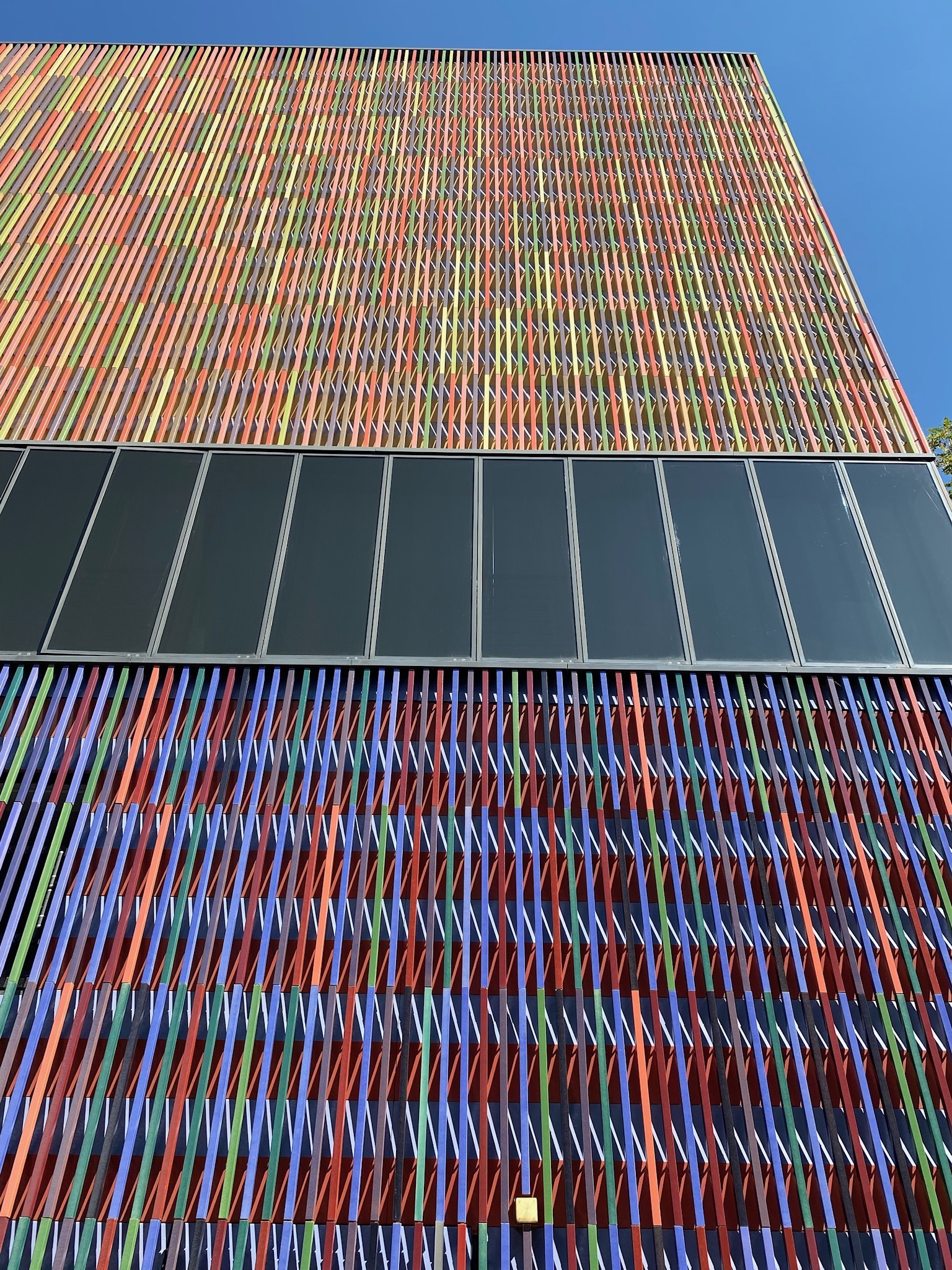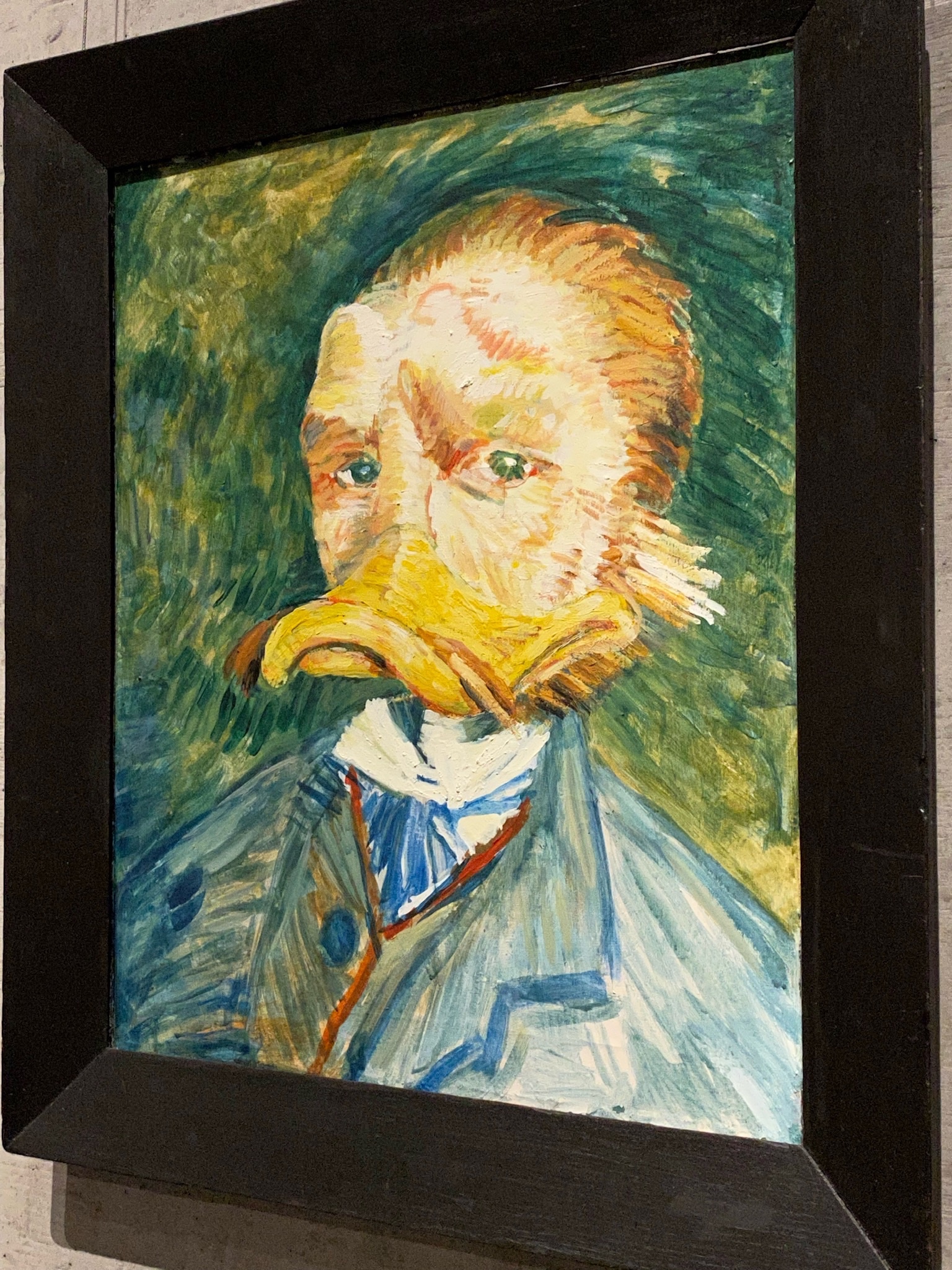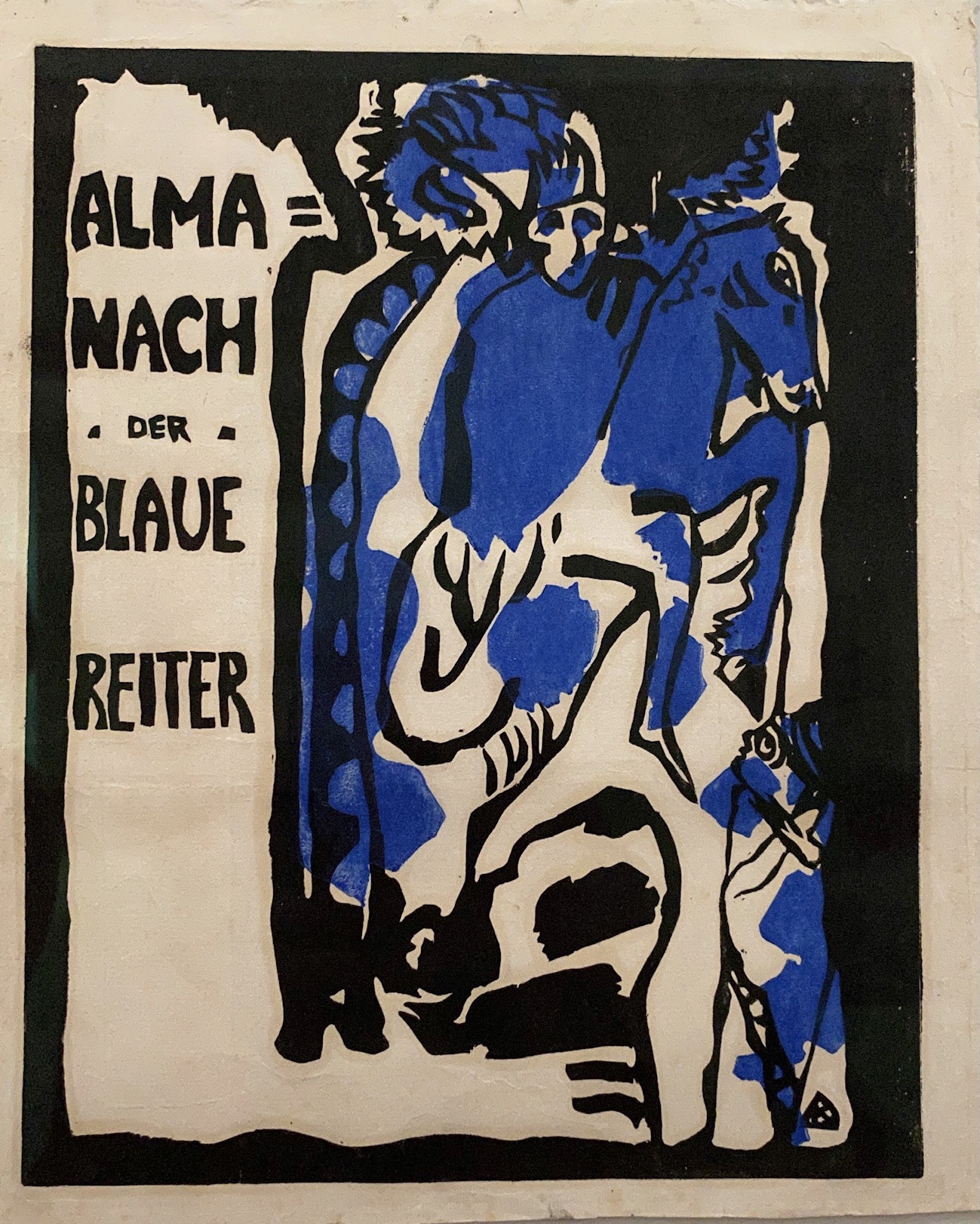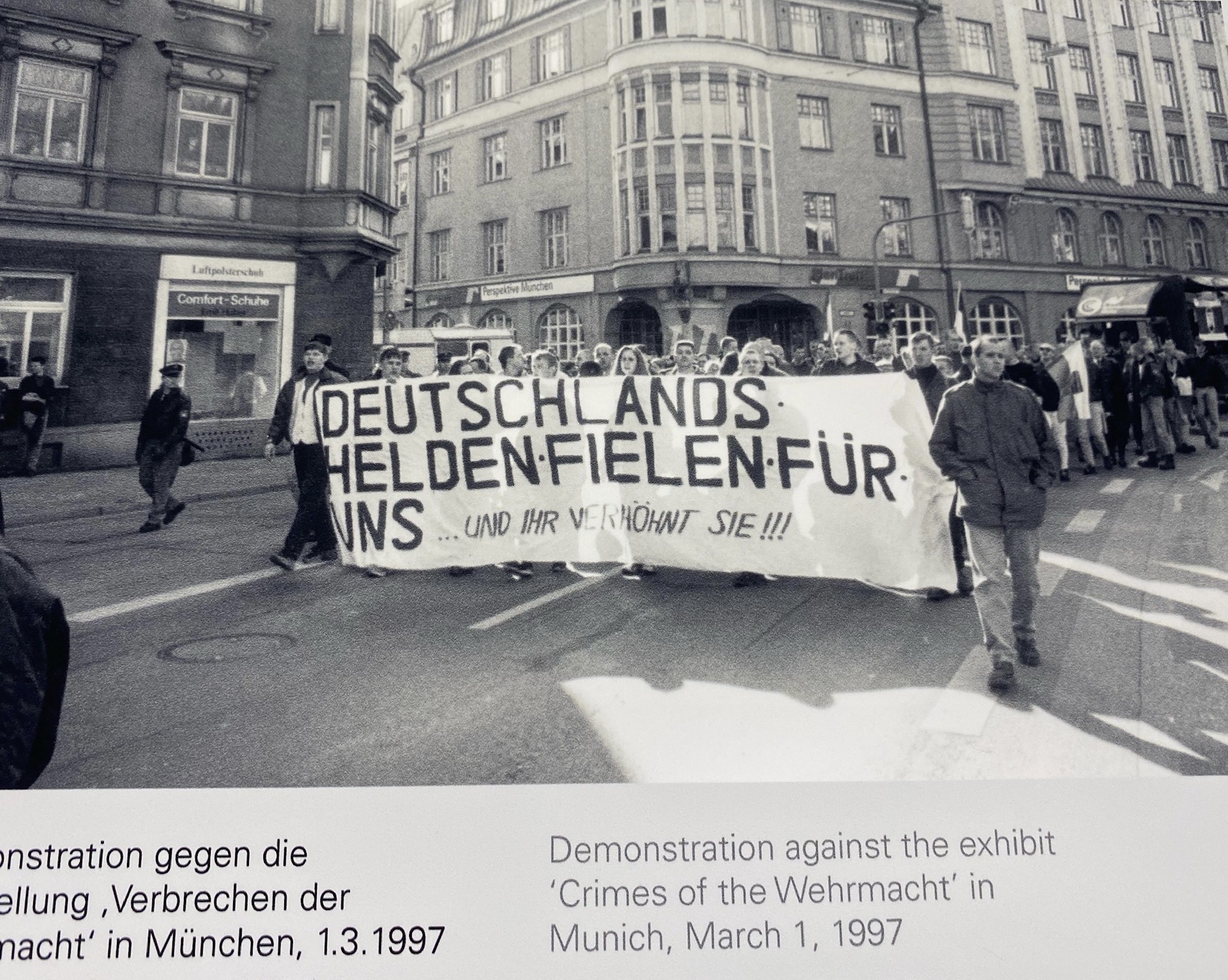8 September 2021
I have visited Munich several times in the past so looking for new experiences and sites. Munich is more than beer and English Garden. And a lot of the best museums are grouped around the Königsplatz making it convenient to visit a plethora of art and artists. Unbeknownst to someone having not visited Munich for a couple decades, even the old is pretty new.

Architects created a beautiful modern building when they designed the Museum Brandhorst, possibly the newest addition to Munich’s art and culture scene. Opened in 2009, its modern, colorful architecture invites you into well-designed halls of contemporary art. The façade is an artistic delight with over 36,000 brightly colored ceramic rods. Its hundreds of art works originated from the private collection of the Brandhorst family and represents contemporary artists since the 1960s. The museum has one of Europe’s largest collections of works by Andy Warhol. American painter and sculpture Cy Twombly is also well represented with his energetic and huge “Lepanto Cycle” presented in its own specially designed room. Relatively new to the art scene is Alexandra Bircken whose talent resides in taking everyday objects and repurposing them into unique sculptures. Avant-garde art is well represented.
I am not a devotee of contemporary/modern art which to me means “if you don’t explain it I wouldn’t know it, and sometimes even after it is explained I still wonder about it.” The Brandhorst does a good job of explaining. Scrutinizing Twombly’s work, I see someone with a piece of paper, a few crayons and colored pencils who scribbles his free thoughts down and mama is so proud she frames it. Subsequently, I discovered I was fairly accurate in my assessment as that is pretty much what fascinated the artist. Maybe I can get into this modern art more than I thought.
“The subject may have been treated 100 times; how a particular painter interprets it is what makes the picture new and a work of art.” – Lovis Corinth, 1916
Alexandra Bircken’s exhibits were just annoying and reignited my general dislike of contemporary art.
The Brandhorst sees its role as a museum of “creativity and free thinking.” It pretty much hits the mark. Entry, as per covid: I was required to show my vaccination card to enter the door, give tracking/contact details and mask – before purchasing admission. This was true of every museum I entered in Munich.
The Glyptothek is a favorite of mine and overlooks the Königsplatz. It’s facade reminds me of the Fields Museum in Chicago with its Corinthian columns and pediment. Built as early as 1848, the interior was damaged in bombing raids in WW2 and was entirely redone in the late 1960s. The clearly marked designated pathway weaves you around a maze of Greek and Roman statuary with lots of Germans to make sure you stay on them and observe the proper number of people allowed at one time in each room.
Its collection of Greek, Roman and early Etruscan sculpture is stunning. Since moving from its cramped halls at the Residenz, its exhibitions are some of the best outside of Greece and Rome. Much of this is attributed to the passion of King Ludwig I who gathered much of the collection, which is extensive.

However, the hit for me was the charming Duckomenta. Think the history of the world presented by ducks. There are a few special traveling exhibits that I would advise traveling to and Duckomenta is definitely one. Such fun, imagination and entertainment. Little explanation is needed. Think everything from the first prehistoric fossil to the Mona Lisa to Che all done in duck. It is a real treat!
Across the street and included in one entry is the Staatliches Museum (State Museum of Antiques) exhibiting Egyptian history. There is an extensive collection of vases representative of both red and black painted figures. The special exhibition of “Dog, Cat and Mouse” was excellent and highlights the ancient sculptures of animals and the critical role they played in the everyday lives of the Greeks and Romans. From tiny little mice to bears, wolves and cats and dogs, the exhibit is charming.
Hellas in Munich is also open for a few more days. The exhibition speaks of the Trojan War. The myth of Troy recounts the story of men in battle for a beautiful woman with the gods on their side. Replace Helen for any symbol you want but in the end, heroics are for naught. Zeus devises a sinister plan for the heroes to slay each other in the greatest war the world had ever seen. Replace this idea with any modern digital war game. The hero’s comply. The gods ultimately turn their backs on them all to face their own fates, which is mostly death. Except for Odysseus who makes it home to Penelope but then this was necessary in order to have a sequel to part one of the story and the fantastic poem “Ithaca” (but only if it’s read by Sean Connery). Troy was sort of like a massive “fuck you” of Greek mythology.
There is a lesson to be learned: the gods aren’t on anyone’s side more than the other. Stop being idiots and start working together for the betterment of humanity.
Stadtische Galerie im Lenbachhaus is right next door. It features 19th and 20th century art. The collections are colorful and represent a wide range of artists. The “Under the Open Sky” exhibition showcases early works by Wassily Kandinsky and his student/mistress Gabriele Münter. Kandinsky left his wife to start a relationship during a summer of painting and they traveled together for a number of years. However, out of this adventure a whole new style and direction for art was born.
“As to technique, it bears remembering that all we have is a very flawed material, we cannot squirt light onto our pallet but only paint.” – Franz von Lenbach, 1893

The Lenbachhaus features the amazing “Blue Rider” exhibition. Heretofore, art was much more central and not seen from an international perspective. Kandinsky, Franz Marc, August Macke and Gabriele Münter viewed art as a collection of styles from around the world. They were considered progressive and presented these works, not their own, in historic volumes of “Blue Books.” For many, it was a first in recognizing the works of artists outside their own narrow sphere. The first Blue Rider exhibit was in December of 1911 and subsequently traveled thru European cities through 1914. Its influence was transformational in the art world. It left me with the feeling had it not been for progressive artists as Kandinsky, every painting would be a landscape, dull portrait or Madonna col Bambino.
“The sentence that a well-painted turnup is better than a badly painted Madonna has become a permanent feature of modern aesthetics. But the sentence is wrong; it must read: a well-painted turnup is as good as a well painted Madonna.” – Max Liebermann, 1916
It was a most educational day. Each art museum was unique with lessons learned about the development of art. I learned a great deal about the process of painting from colorism to paint strokes and lines. Most everything was in English, but then one doesn’t need English to grasp Duckomenta.
One last stop was at the Dokumentationszentrum or Nazi Museum. Its emphasis is on how to properly catalogue, store and display the historical documentation and interviews of the survivors of the Holocaust. How can they insure these records of history are not lost? Thousands of live interviews by survivors have been recorded, survivors who no longer are alive. It is a concern that most would not think about, yet it is critical to retain this documentation.

Also included is an excellent exhibit documenting West Germany’s struggle to face the crimes of the Wehrmacht and fascist. German history had focused on individual victims and German resistance, victims of Allied bombings and its fallen soldiers. It took a generation and into the 1980s for change and a demand to address Germany’s crimes and German participation in the Holocaust. No longer suppressing the reality of their past, Germans progressed forward to confront it. It was not an easy path but certainly a worthwhile one.
An excellent read for those who cannot visit this exhibit is Susan Neiman’s “Learning from the Germans.”
Food is like art. After a long day of museums, fried calamari with crispy parsley and basil, linguine pomodoro and cold Weiss bier in Germany is a well-enjoyed dinner.
As Max Liebermann wrote, “A well-painted turnip is as good as a well-painted Madonna.”

0 Comments